In Pictures: Rebuilding a rare Mk1 Spitfire
- Published
During World War Two, Spitfires were mass-produced in a matter of weeks. Today it can take years of research and hard work to restore one of these iconic fighter aircraft to the skies.
When Spitfire P9374 was shot down over northern France as the British Army was retreating towards Dunkirk, nobody thought that 70 years later she would be flying once again.
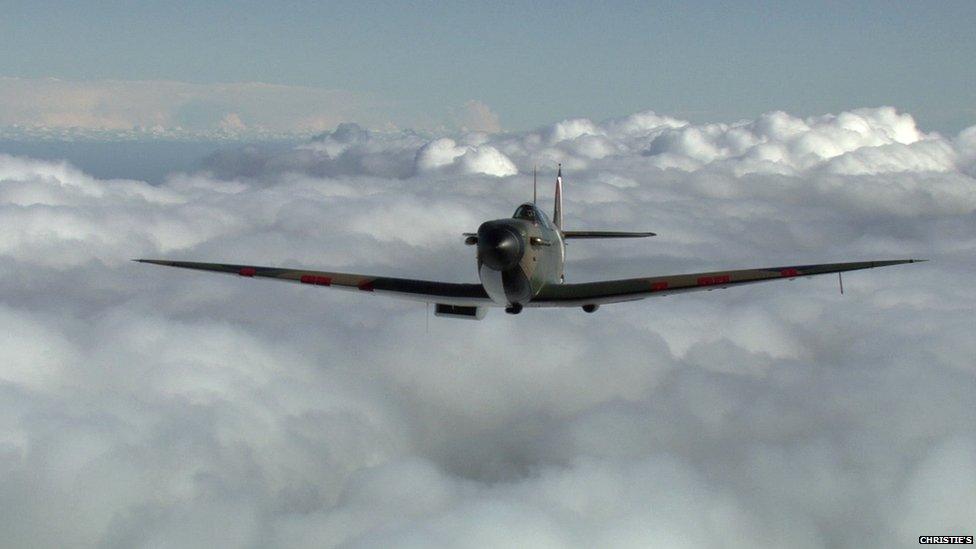
More than 22,500 Spitfires were built between 1938-48: just 236 survive today and only 56 are still flying
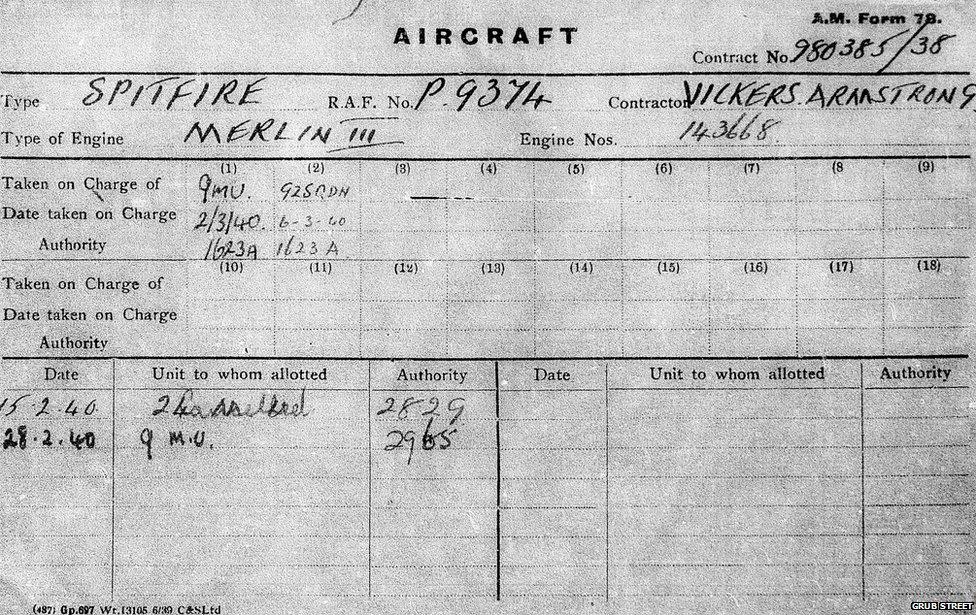
This aircraft was built by manufacturers Vickers Armstrong and left the factory on 2 March 1940, going first to No.9 Maintenance Unit for final checks
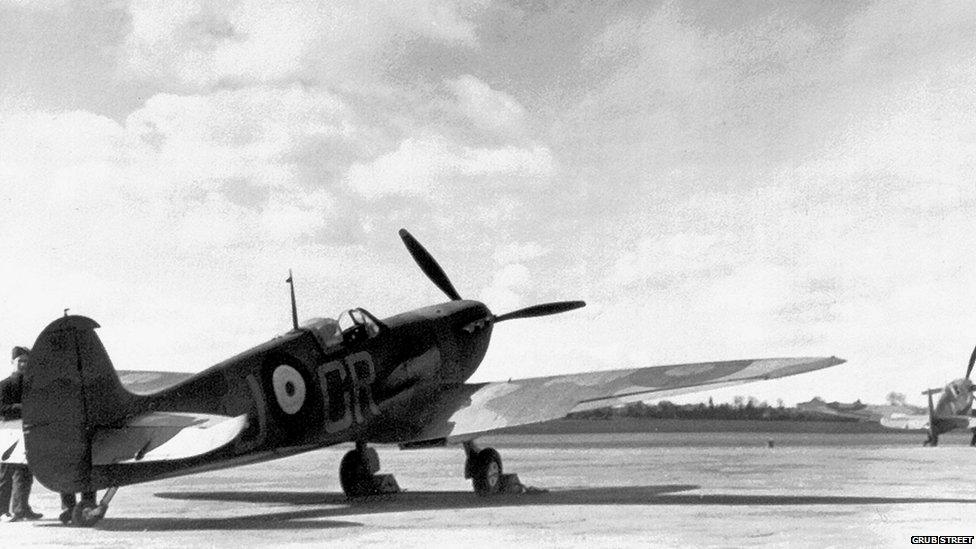
It then went to 92 Squadron RAF where it took part in the air fighting over France
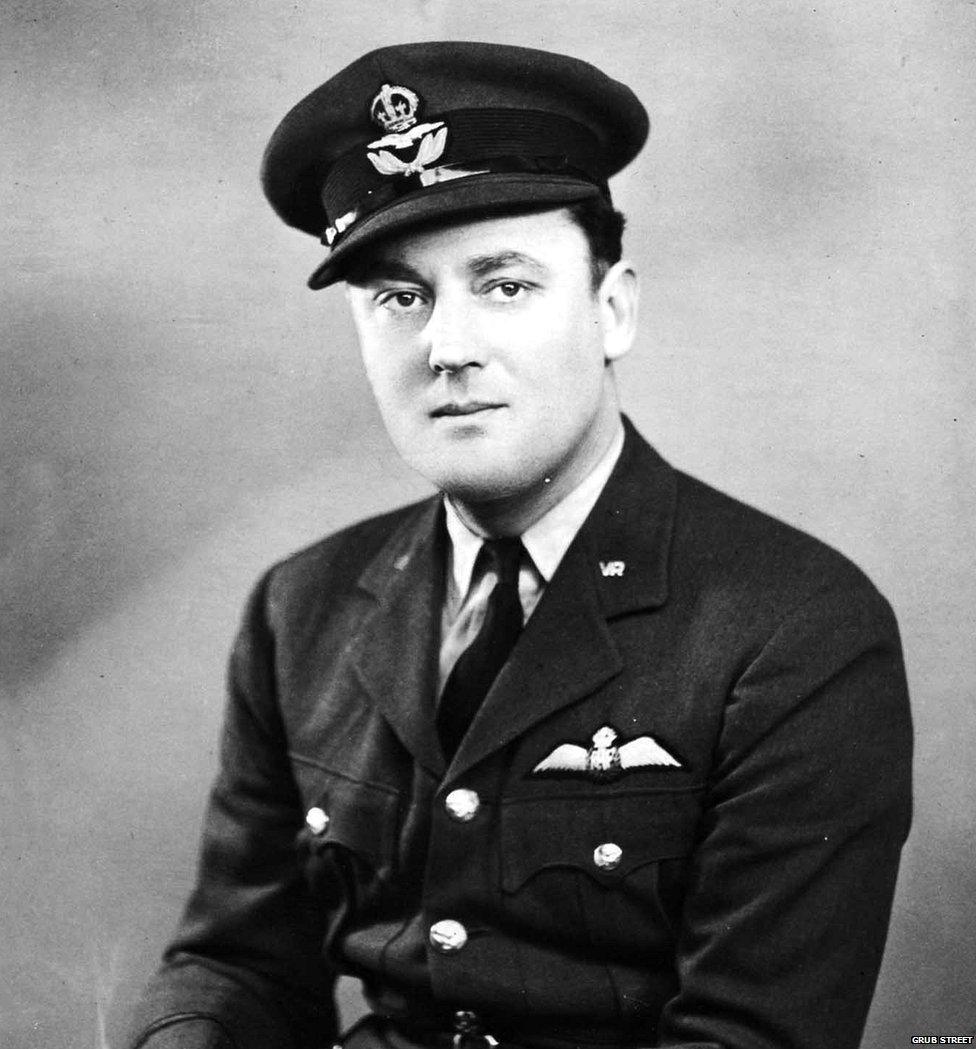
Flying Officer Peter Cazenove was piloting the aircraft when he was shot down on 24 May 1940 - he survived but spent the rest of the war in a German prison camp

After crash landing on a French beach, P9374 was gradually covered by sand, only re-emerging 40 years later
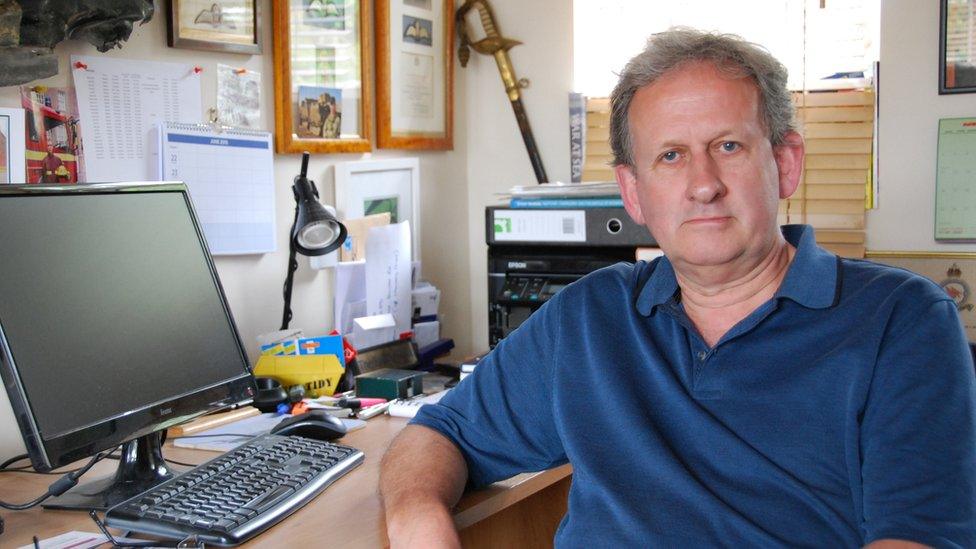
"I couldn't believe it when I was told in 1980 that there was a Spitfire on a beach near Calais," recalls aviation historian Andy Saunders
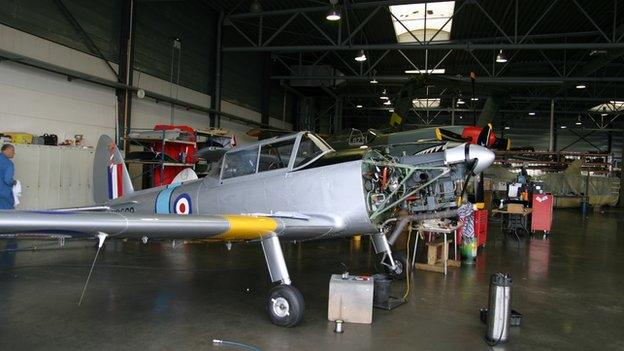
Eventually US billionaire Thomas Kaplan bought the Spitfire and it came to the workshops of Duxford's Aircraft Restoration Company (ARC) for complete restoration
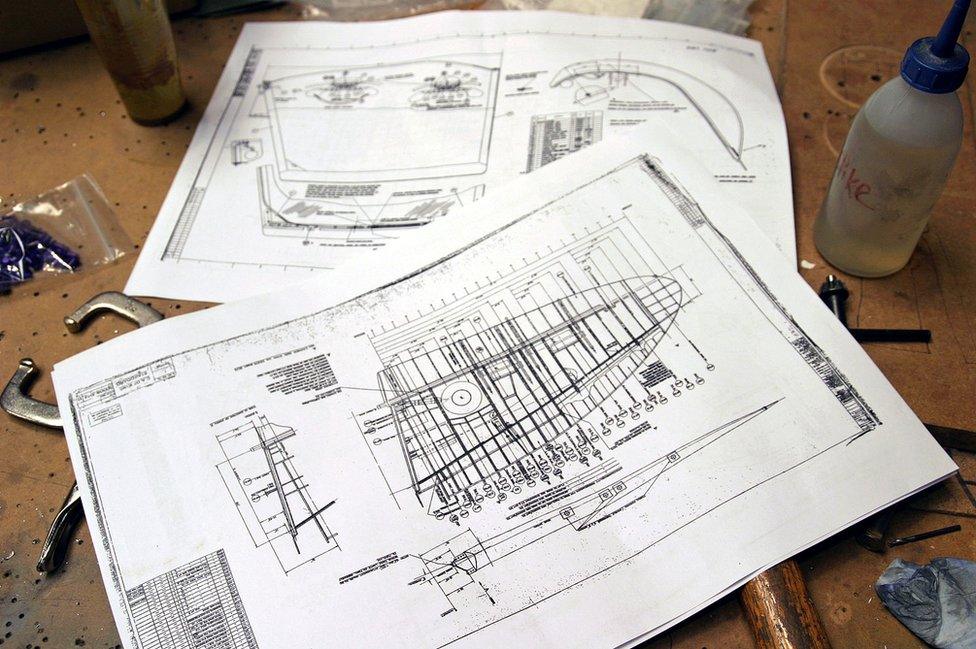
The first problem was to work out what this Spitfire would have looked like in May 1940, as during the war aircraft were rapidly modified often without any records
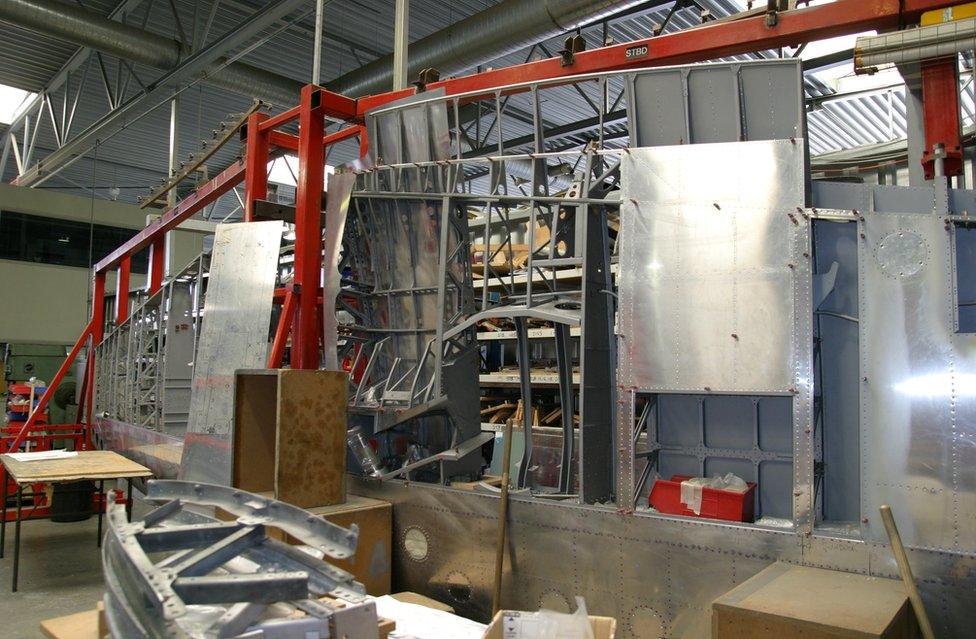
Reconstructing the Spitfire's famous elliptical wings was one of the main challenges
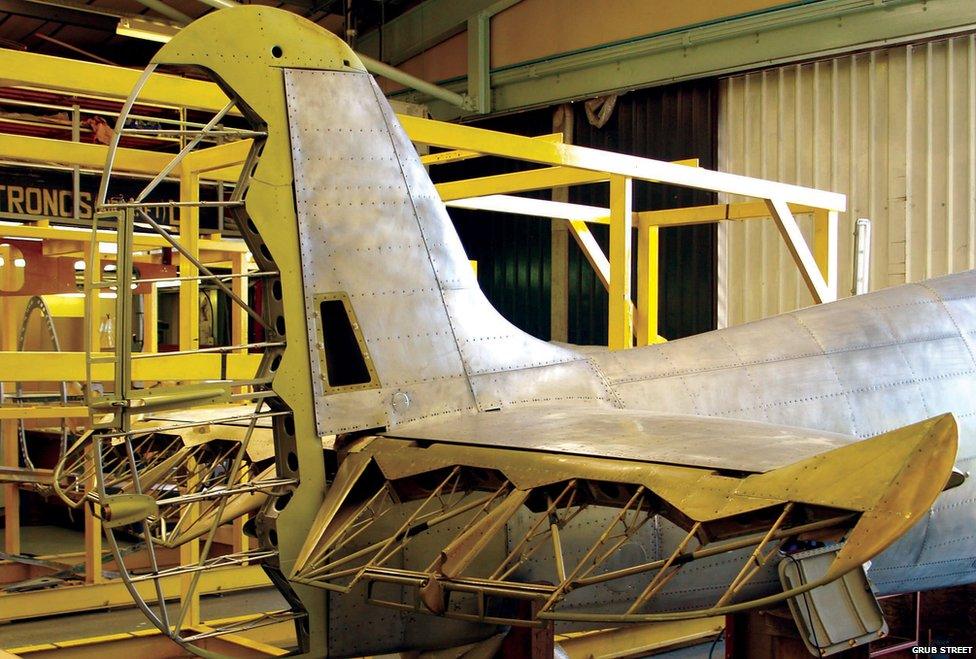
After four decades on a beach, much of the aircraft had to be completely rebuilt
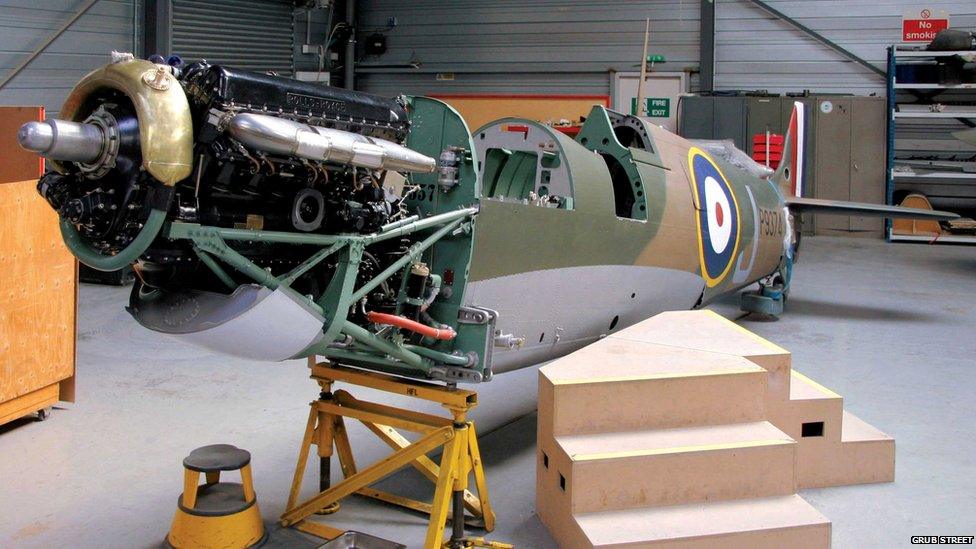
The aim was to return P9374 to the condition she was in the day she crash landed
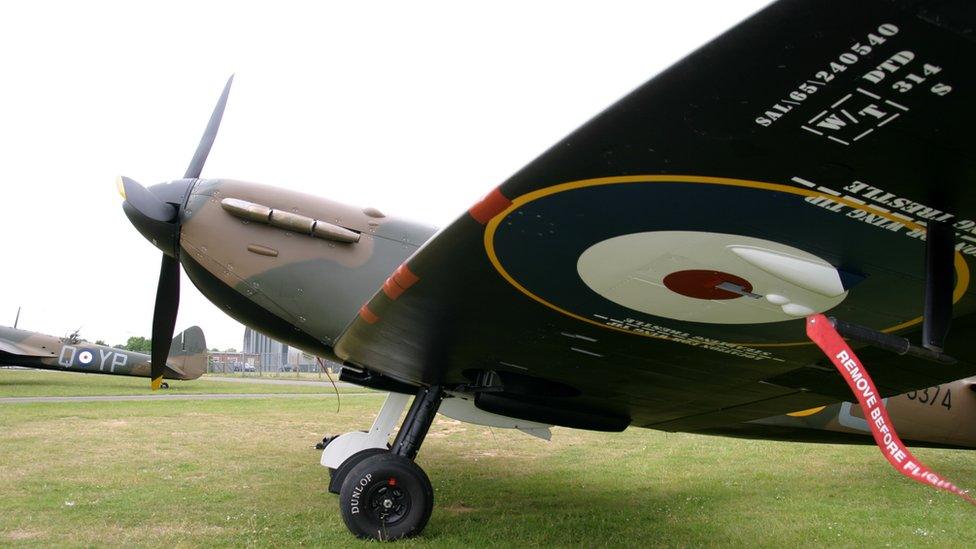
Owner Thomas Kaplan says the restoration project "became a labour of love for everybody involved"
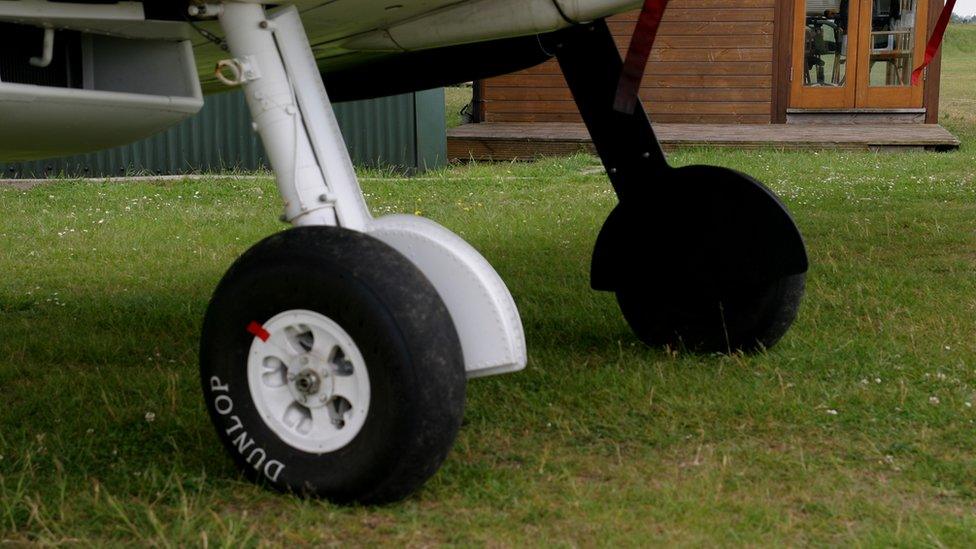
Getting the undercarriage right was one of the challenges - moulds for constructing new tyres had to be specially made
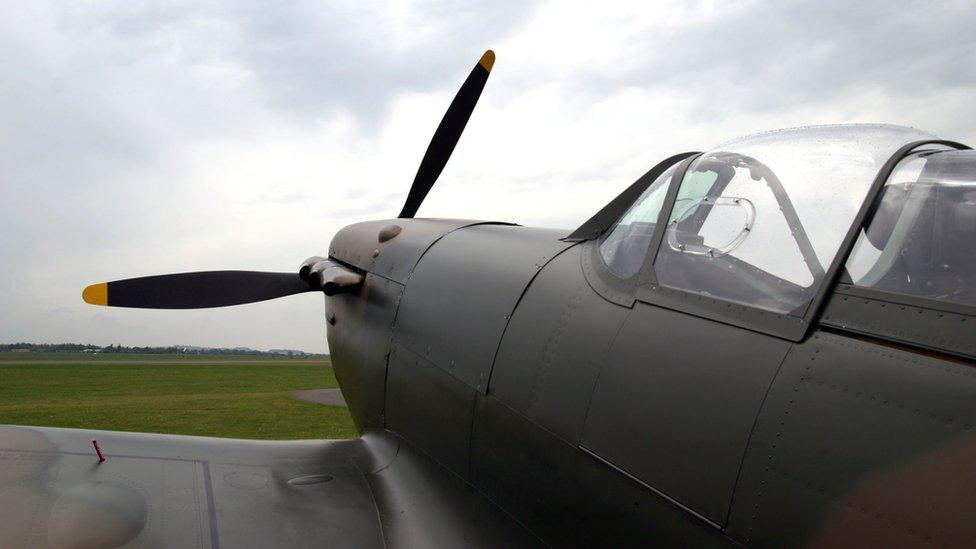
During 1940, Spitfires were changing rapidly: "You'd find aircraft that were three months older and were completely different," says ARC's Martin Overall
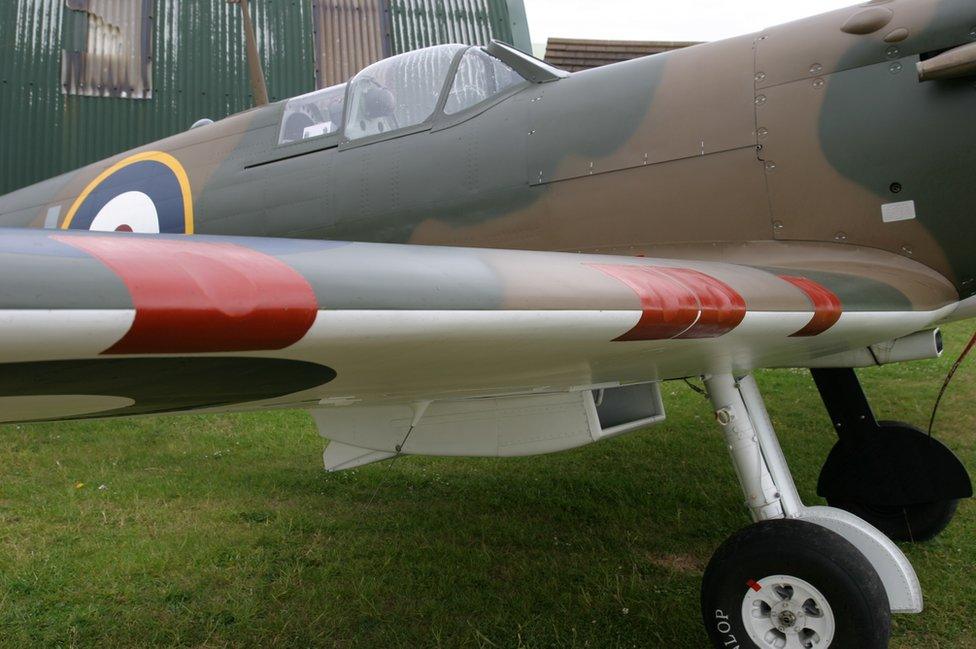
Unlike many other aircraft on the air show circuit she carries all eight .303 inch Browning machine guns, complete with ammo boxes and some 1940-dated belts of ammunition

New propeller blades also had to be made: this Spitfire has a metal propeller unlike later versions which had wooden ones
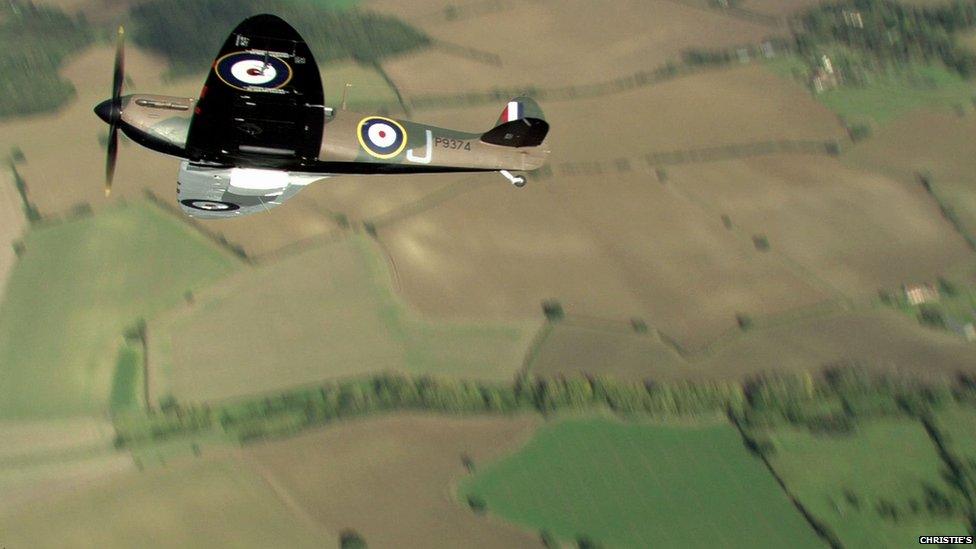
And the professional's verdict? "The Spitfire is a lovely, smooth, agile aircraft to fly," says pilot John Romain
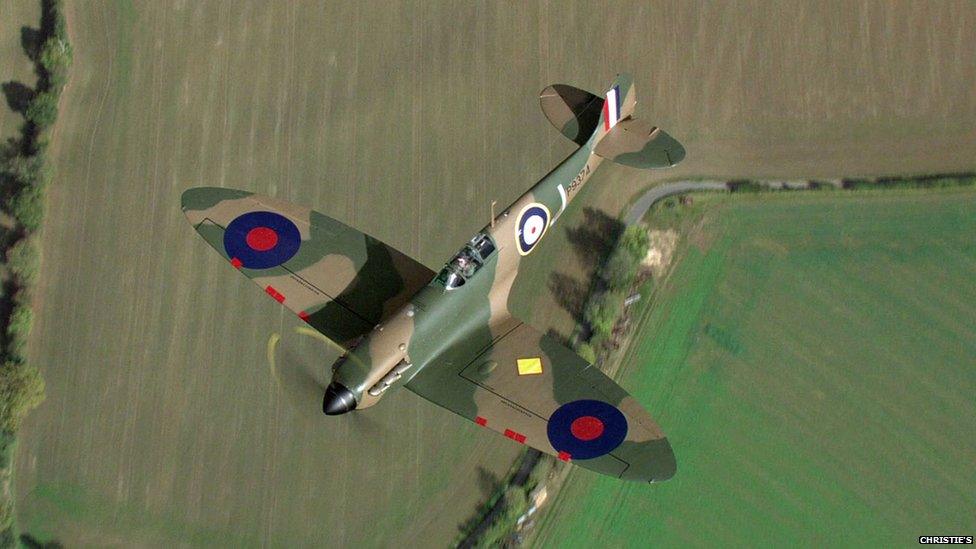
Thomas Kaplan says he was driven by a desire to say thank-you to Britain for its stand in 1940: "To me it was all about the Few, who stood up and said, 'this is the line beyond which we won't be pushed'."